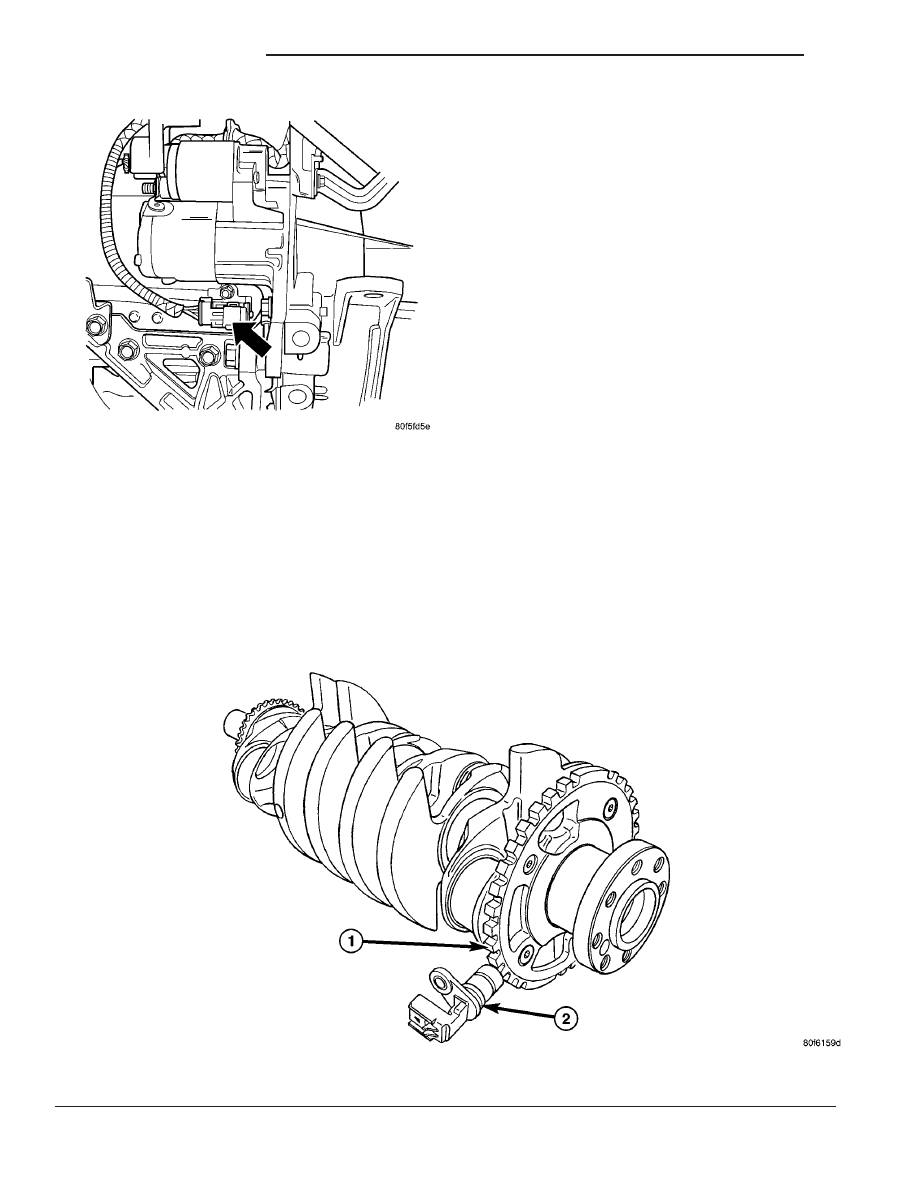Chrysler PT Cruiser. Manual - part 740

A ground for the sensor is provided through the sen-
sor return circuit. The input to the PCM occurs on a
5 volt output reference circuit that operates as fol-
lows: The Hall-effect sensor contains a powerful mag-
net. As the magnetic field passes over the dense
portion of the counterweight, the 5-volt signal is
pulled to ground (.3 volts) through a transistor in the
sensor. When the magnetic field passes over the
notches in the crankshaft counterwieght, the mag-
netic field turns off the transistor in the sensor, caus-
ing the PCM to register the 5-volt signal. The PCM
identifies crankshaft position by registering the
change from 5 to 0 volts, as signaled from the Crank-
shaft Position sensor.
The PCM determines what cylinder to fire from the
crankshaft position sensor (Fig. 6) input and the
camshaft position sensor input. The #8 crankshaft
counterweight has a target ring with 32 teeth and
notches, including one long referance tooth and
notch. From the crankshaft position sensor input the
PCM determines engine speed and crankshaft angle
(position).
REMOVAL
REMOVAL - 1.6L
(1) Disconnect the negative battery cable
(2) Raise vehicle and support.
(3) Disconnect the electrical connector (Fig. 7).
(4) Remove bolt from Crankshaft sensor.
(5) Remove sensor (Fig. 8).
REMOVAL - 2.0, 2.4, 2.4L TURBO
The Crankshaft Position Sensor is in the front of
the engine block just under the starter motor (Fig. 9).
(1) Disconnect the negative battery cable.
(2) Raise vehicle and support.
(3) On 2.4L SRT-4 remove the lower inner cooler
hose from the metal tube.
Fig. 6 TIMING REFERENCE NOTCHES (NGC)
1 - Crankshaft
2 - Crankshaft Position Sensor
Fig. 5 Crankshaft Position Sensor
14 - 28
FUEL INJECTION
PT
CRANKSHAFT POSITION SENSOR (Continued)